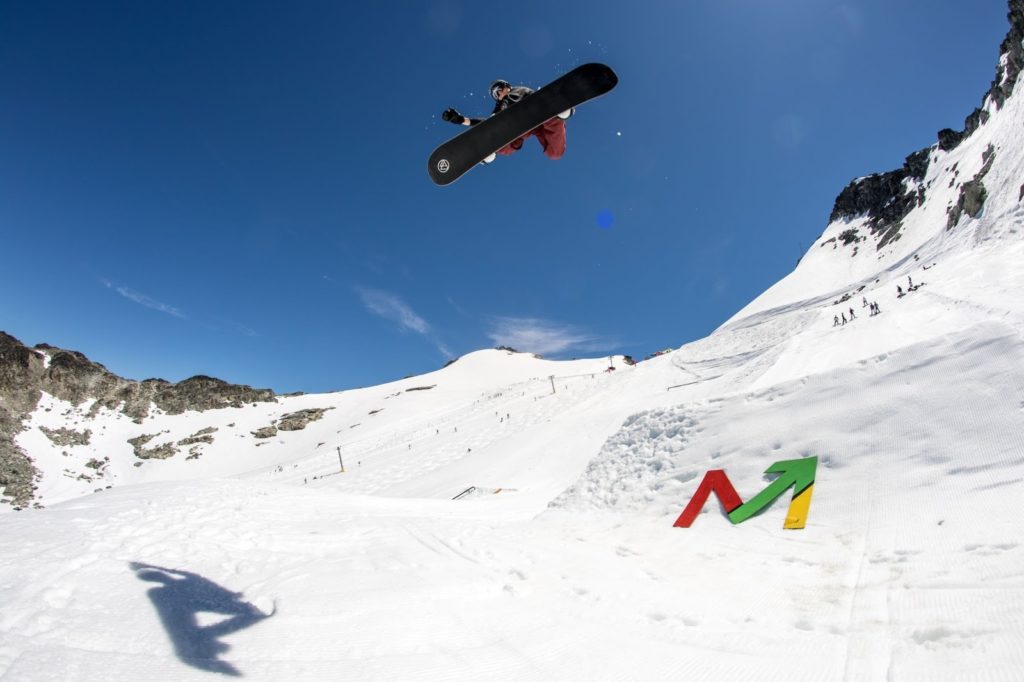The Power of Mentorship: An S&C Family Tree Perspective
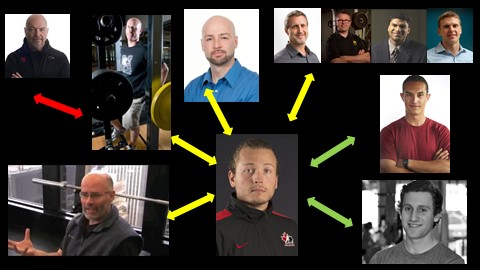
By Chris Chapman, Steve Lidstone, Joe Vecchione, and Jeremy Watkin
Power is defined as the rate of work or work divided by time. This is the perfect descriptor for mentorship “as many hands make light work”. Mentorship can greatly increase the rate at which young professionals grow, it can increase the volume and quality of work that is produced through collective effort, and it can prevent the decay of relevance by keeping young unbiased minds learning, questioning and challenging the current systems.
This article portrays 4 stories of mentorship through 3 generations of an S&C family tree.
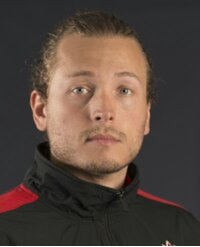
Chris is the Director of Sport Science at PUSH, a Canadian-based sport and weight room technology company. He is also a strength and conditioning coach with Freestyle Ski Canada and Paddle Monster, working with extreme and endurance sport athletes.
Meeting My Mentor
When people ask me how I got to where I am, after saying a combination of luck and unrelenting hard work, I always tell the story of how I met Steve Lidstone, my first strength coach mentor.
I had recently graduated from the kinesiology program at McMaster University. I had spent 2 years as both a personal trainer and athletic therapist and had more experience than most at my age. The Canadian University system was lagging far behind the US in the 2000s with minimal existence of field specific jobs. McMaster was always a school that led the way in athletics in Ontario and was hiring a full-time S&C coach after its previous one, and one of the few in the country, Neil Ross had left.
In my naivety, I applied for the job and thought I had a chance (in reality no chance in hell). They ended up hiring Steve Lidstone (current Director of Sport Performance at Brock U) who held the same position at York University where he was employed at the time. I had successfully earned a job staying on at McMaster as an Athletic Therapist for the Canada Basketball Development Academy program and was still crushing hours of personal training to pay the bills, so I decided to stick around McMaster a little longer.
When Steve started he held an open meeting to explain the program he was trying to build. I showed up with ears and eyes wide open because he had the job that I wanted. He told the story of how he got to where he was, his influences and mentors, how he went about learning from them, and specifically his story about meeting one of his mentors Scott Livingston in a very similar situation to how I met Steve. At that exact moment, I said to myself, “I am going to do the same thing with you, how you got to where you are is what I am going to do to get to where I want to be.” My goal from that moment was to be, hopefully, the not so annoying shadow learning every little bit of experience and knowledge I could. At the time I didn’t realize it, but now I can honestly say I owe my whole career to Steve Lidstone taking a chance on me and taking me under his wing.
From One Mentor to the Next
Roughly 2 years later I decided it was time to fly the coop, being one of the first Steve brought into the Hockey Canada circles (“Steve-lings” as Julie Healy and Mel Davidson had named us), I was ready to leave McMaster and begin the next journey of my career.
At that time, I knew I wanted to work with Olympians from the taste I had with Canada Basketball and Hockey Canada. The only person I knew training athletes full-time was Chris DalCin at his lab called the Olympic High Performance Centre based out of the Fitness Institute in Toronto. I decided to move to Toronto and figure out a way to learn from Chris.
As a parting gift, Steve passed on his role as the Head Strength Coach for Trampoline Canada, an Olympic discipline of gymnastics. He didn’t have the time to work with them anymore, and I was moving to the city where they were based. Given I was one of his first proteges whom he trusted, it made sense from a transition and legacy standpoint and opened another opportunity for me that eventually led to my employment with the Canadian Sport Centre Ontario (CSCO).
My sole goal in moving to Toronto was to work at the CSCO. Shortly after moving to Toronto the Canadian Sport Center Ontario (which is now Canadian Sport Institute Ontario) had recently been formed, and Chris DalCin moved his lab from the Fitness Institute to become the Lab Manager. Chris had done all of the testing for the Olympic trampoline team since the sport’s inception in the Sydney Olympics, so he was extremely well versed in the sport. I used this as a gateway to learn as much as I could from him, taking every opportunity to pick his brain.
I was also enamoured with the sport lab and what Chris had built, I had seen nothing else like it at the time. I put all my efforts into doing great work with trampoline, and they noticed and gave me another contract with figure skating. Again, I put all of my energy into that and eventually they brought me on as one of the first full-time strength coaches at the CSIO. When people give you opportunities doing your best to knock it out of the park will go a long way to creating more opportunities.
It was because of Steve and Chris that I made a conscious effort to give back and mentor those coming up after me. I found a love of teaching and educating early on in my career, and mentorship is a very targeted and specific version of that. Steve and Chris were great mentors, plus they are egoless, humble, and always think of others before themselves. A perfect example of this is on the first day of working with Steve he gave me a USB key with every piece of work and programming he had ever created. No secrets, nothing to hide, just “here this may help you to be better.” Chris on the other hand, would give his time without limits whenever I had a question, or discuss an idea, or teach me a new skill/tool. Time is the most valuable resource in our world, and Chris gave an unlimited amount to help me grow.
Where to Start
One of the best parts of being a mentor is that you surround yourself with young coaches who are learning the latest in academics and science. They will ask questions and hopefully challenge your thinking and processes, making you a better coach. A mentor can learn just as much from a student as they can give; mentorship is a two-way street or a win-win situation for everyone involved if done right.
My first suggestion to anyone starting or looking for growth in their career is to find someone who has the job you want, the skills you desire or any other facet of the industry you might be interested in and spend time with them in ANY way you can. Whether that is asking to shadow/observe, offering your services or volunteer, or taking them out for a meal or a beverage. Be personable; the industry is much more saturated today then it was when I was coming up. You need to set yourself apart from the crowd. Pick up a phone. Do something other than email. Seeking mentorship is an active process, and a mentor’s time is invaluable so show them why they should give back by investing in you.
For mentors, be very clear what your goals are in mentoring someone as it is a lot of time and effort, and it doesn’t always work out as planned. Giving back is one thing, but making meaningful change and helping others to achieve their professional goals is another.
Finally – I challenge you to draw out your family tree. Even if you don’t have enough to fill it, draw out what you want it to look like. What skills do you want to learn? What roles do you want to have in your career? Then find possible people to fill those boxes. People who would be humbled, happy, and honoured to work together. People who have the role you are striving towards.
Lessons
- Being a mentor will challenge your current systems and beliefs with a young and hopefully unbiased mind that will ask lots of questions. It also helps you to keep a pulse on the latest knowledge, science and trends being taught at educational institutions.
- Being a mentor moves the industry forward as the lessons you learned through your and your mentors’ experiences can be passed down, ideally shortening the cycle for growth and preventing backward movement or lost knowledge in the industry.
- S&C is a people game and experience is king. The experiential knowledge you gain from a mentor who has been in the game longer than you have is more than likely something you will not learn in school. Don’t let education get in the way of your learning.

Bottom left to clockwise – Chris Dalcin, Scott Livingston, Steve Lidstone, Tyson Beach, Trevor Cottrell, Stu Phillips, Sheldon Persad, Dave Frost, Joe Vecchione, Jeremy Watkin, Chris Chapman.
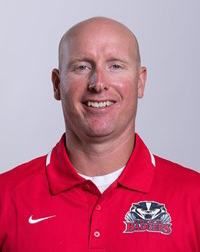
Steve is the current Associate Director of Sports Performance at Brock University where is pursuing his Masters in motor skill acquisition, and the former Strength & Conditioning Coordinator at McMaster University and Strength & Conditioning Coach at York University.
Upon my hiring at York University (shortly after I had graduated in the concurrent Kinesiology and Athletic Therapy program at York U), I knew I needed to find someone who had a similar approach to my own and could combine S&C with Reconditioning. I have been blessed in my career to have mentors in both disciplines over the past 16 years. Cindy Hughes was the head Athletic Therapist at York and she suggested that I reach out to Scott Livingston in Montreal. Scott was hosting a Reconditioning course in Montreal (my hometown) so I enrolled in the course, crashed at my aunt and uncle’s place and took the weekend-long course in the summer of 2005.
Halfway through the first day Scott noticed how passionate I was about the course and I think the fact that I could not stop smiling (thoroughly excited to find others who thought the way I did) was a give away too. Scott invited me out to lunch that day with his wife Jamie and we all hit it off. After the course, Scott invited me back to Montreal for a week over the next couple of summers to assist with training a few of the Montreal Canadiens at the Bell Centre and assisting with a portion of rookie camp. Needless to say, the mentorship continues nearly 15 years later and I continue to learn from both Scott and Jamie to this day.
The summer of 2005 was also the first summer that I was invited to take part in my first Hockey Canada camp with Jason Poole. This was a massive opportunity for me to meet with Pooley in Calgary who was looking to set up satellite strength coaches at various cities where their players were training. Jason was also looking to host annual camps and mentor quality S&C coaches from across Canada. I owe so much of my career to Hockey Canada as the Women’s program (under the guidance of Melody Davidson and the direction of Jason Poole) fostered the development of so many S&C coaches through their camps, Olympic Boot Camps and annual summer U18/ development and senior team camps.
In the early years, these camps allowed me to visit Calgary, learn and develop my skills in field & lab-based fitness testing, training and team challenges designed to add training age combined with mental resilience. Hanging out at the Olympic Oval for 1-2 weeks each summer, I was truly blessed to learn from or talk shop with Jason Poole, Karen Kendall, Chris Dalcin, Matt Jordan, Scott Maw, Mac Reid, Ryan Van Asten, Darren Steeves, Adam Douglas, Scott Wilgress, Jeff Osadec, Jeff Wood, Cory Kennedy, Dr. Stephen Norris and Dr. Smith. Each of these people have impacted me one way or another and helped shape my career over the past 15 years.
It was a combination of the mentorship that Cindy Hughes, Jason Poole and Scott Livingston graciously provided me, that provided the framework from which I would structure the S&C program at McMaster University (Mac) from 2007-2016. Each year at Mac I would interview 40-50 students in 1-2 days. In groups they went through a 30 min theoretical and a 30 min practical interview. From that I selected the top 15-20 each year to join our staff of 40 or so student interns and host our annual April 4 day S&C coach training camps. It was the S&C internship at Mac that would provide me with the platform to mentor and develop the next generation of S&C coaches, therapists, physiologists, and various other health care professionals.
It is thanks to Jason Poole and Scott Livingston who both passed on to me the importance of mentoring others and passing on what I have earned from all of the professionals listed in the paragraph above. I am overwhelmed by the number of students that I have been fortunate to mentor over the years. It was at Mac that I had the pleasure of working with and mentoring Chris Chapman.
Chris was far from annoying, he was PASSIONATE and I will never turn away a passionate person. Chris would work with our volleyball program at Mac and was one of the first students I would bring with me to Calgary for a Hockey Canada Camp. As mentioned above, it was these annual camps hosted by Hockey Canada that would also allow me to provide mentorship opportunities to so many up and coming coaches.
At first, I was permitted to fly out 3 to 4 students each May to camps held at the University of Calgary. These undergraduate students (including Chris) were also subjected to many of the professionals listed above. Chris Chapman was one of the first “Steve-lings”, a term I did not like as I wanted these students to develop into their own coaching styles and not a replica of myself. Chris would go on to take over for me with Trampoline Canada in 2009 as I had a young family and could not travel as much anymore.
From 2011-2016 McMaster would be the host of several annual Hockey Canada Camps. Many of the athletes were from Ontario and this would allow for dozens of young S&C coaches to be mentored by admin staff, coaches, therapists, and physicians as we hosted nearly 100 athletes each May.
I truly cherish those camps for the experiences we were provided thanks to the vision of Mel Davidson. Mel also taught me the importance of developing future leaders in sport. Thanks to the athletes and staff at these camps several CSI, NSO, Pro Sport, University, Collegiate and Prep School S&C coaches developed an unwavering passion for the field. Too many to mention but they know who they are. I am truly fortunate to have been trusted to take part in these camps with such great people. We developed friendships and memories that will last a lifetime.
I am so proud of people like Chris Chapman as they have taken what I and so many others have taught them and formed their own thoughts and niche within the field. I love watching a former student present at a conference and know that they have become much more polished than I will ever be. That is both humbling and priceless.
Lessons
- A quote that I have dedicated my career towards: The true meaning of life is to plant trees, under whose shade you do not expect to sit.” —Nelson Henderson.
- Seek opportunities to grow each and everyday. It is often those opportunities that seem daunting and outside of your scope that force you to grow and get better.
- Mentorship is cyclical. When you invest your time and energy into a human being, it is out of mutual respect that in time they will also pass on what they have learned to you, so that you (the mentor) continue to grow as well.
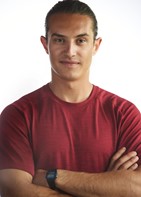
Joe is a strength & conditioning coach to athletes of all sports, primarily working with soccer athletes with the Vancouver Whitecaps Academy in the MLS. He is a masters student at UBC studying skill acquisition of both motor and perceptual-cognitive skills in athletes.
Securing Mentorship
I met Chris in 2014, during my final year of undergrad. He was presenting at a conference at the University of Toronto (UofT). When he introduced himself as a “Strength & Conditioning Coach working with National and Olympic athletes at the Canadian Sports Institute of Ontario” I knew I needed to meet him.
Meeting Chris wasn’t the only thing that changed the trajectory of my life that day. After chatting over lunch and expressing my interest in S&C (at the time I had zero exposure or experience), I went to follow up on my grad school application with a potential supervisor (in the only lab I applied to). I would be personally rejected and encouraged to apply the following year.
Returning to the luncheon amongst UofT graduate students was rather humbling. Smiling in disbelief as I broke the news to Chris, he quickly turned the conversation from depressing (and somewhat embarrassing for me) to a positive one. He quickly began encouraging me to walk over to the gym and introduce myself to UofT Head S&C coach, Adrian Lightowler. He told me that I would have to be insistent, encouraging me to use similar tactics he employed in search of his first internship.
This happened on a Friday afternoon. I waited for the weekend to pass and sent Adrian an email Monday morning. A few months later, and I was starting my first S&C internship.
Reflecting on the day I met Chris, it’s obvious that this initial interaction would set the stage for an eventual mentorship. Although I know it now, it was never really discussed until years later.
It wasn’t until more than 6 months later that I realized I was even on Chris’ radar. At the time, I was interning at both the Canadian Sports Institute Ontario (CSIO) and UofT – Chris was working as an S&C coach with the CSIO while doing biomechanics research at UofT. We met for coffee near his lab one day, and I peppered him with typical questions of a rookie coach – I think I was certified for 3 months at the time.
I remember Chris saying to me before we went our separate ways, “Stay the course and keep working hard. Heather (my former professor and Lead of Physiology at CSIO at the time) and I wouldn’t be investing our time if we didn’t see potential in you.” I didn’t realize it at the time, but Chris was foreshadowing the beginning of what would become an eventual mentorship.
There’s an important lesson in all this, and something that doesn’t get talked about enough – it takes time to secure a mentor. In my experience, it usually takes upwards of 6 months to a year before a mentorship truly begins to form. Be patient. Continue to engage your potential mentor diligently. The key is to demonstrate your continued growth through meaningful updates and thoughtful questioning.
Seeking Mentorship
I’ve been fortunate to know Chris for the entirety of my coaching career which set the bar of what I expected in a mentor incredibly high. For a long time, I was expecting everyone else to be like him. I was naïve.
Although I sought out guidance, many coaches failed to deliver the support and wisdom in the way Chris did. I’ve come to realize an important lesson about mentorships – each one is different.
I’ve since realized that mentors exist on a continuum. Not every mentor is able to offer guidance in every situation, and the more you grow as a coach, the more likely it is that you’ll need a network of individuals and mentors who you can rely on for guidance.
When seeking mentorship, the most important piece of the puzzle is understanding what gaps you are trying to fill – because it is unlikely that one mentor will be able to fill all of them. What a great mentor will do, is introduce you to the right person, or point you in the right direction or resources to better guide you.
Chris is a connector. When I asked him countless questions about training youth athletes, he connected me with Matt Verboom who was working at full-time at Upper Canada College with high school athletes. When I had questions about career building, he connected me with Dale Lablans who was working at Athletics Canada. When I told him I was moving to Vancouver, he offered to connect me with John Abreu who was a colleague at the Canadian Sports Institute Pacific in British Columbia.
I’m happy to say that I remain in contact with each of them.
Flying the Coop
In the last few years (approaching the 6 year mark of my young coaching career) I’ve made great leaps in my development. I firmly believe that my growth as a coach is directly tied to experience in a variety of settings and being able to learn from great coaches – both veterans and up-and-comers.
Before I flew the coop, heading across the country from Toronto to Vancouver, I met with Chris. We spoke about a variety of things, from coaching and career progression, all the way to business and work-life balance. In a way, it felt as things have come full circle – from getting rejected from graduate school on the day I met Chris, to being his mentee and discussing my future as I prepare for graduate school at the University of British Columbia.
Since then, I’ve been blessed with new mentors at UBC, and the Vancouver Whitecaps (MLS) where I’ve recently been hired as Academy S&C Coach.

As I settled into my role with the Whitecaps organization, I was able to call on my network of mentors for direction. The combined experience of this shortlist exceeds 100 years and spans every setting and level of sport. The value in this cannot be overstated.
I have never been more confident in my ability to succeed as a coach – thanks in large part to the power of mentorship.
Lessons
- Developing a relationship with a mentor takes time. It requires a delicate balance of patience and persistence.
- No two mentors are alike. Each brings a different view and perspective. This diversity will only broaden your networks and understanding.
- You need more than one mentor. Seek mentors in leadership positions. They get the big picture and know what it takes to make a career in coaching.
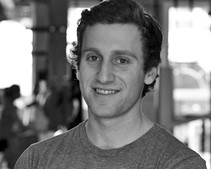
Jeremy is a Strength and Conditioning Coach at the Canadian Sport Institute Pacific in Whistler, BC working with Snowboard athletes.
My career thus far as an S&C coach has likely not been much different from others, however, I feel that I have a few valuable ideas to share. When I finished my undergraduate kinesiology degree from McMaster, I had zero experience as an S&C coach but had 5 years of experience on the athlete side of the equation as I played soccer for the university. Having been exposed to a variety of people helping me through training and injury rehab, I had experienced the good, the bad, and the ugly of coaching.
After graduating, I worked as a personal trainer in Toronto to support myself financially. The flexible hours of personal training allowed me to gain more experience in sport settings as a volunteer with various teams from the Ontario Snowboard Club to UofT Varsity squads. My interest in working with athletes developed with each experience, and I found joy in working with snowboarders in particular. I loved everything about the sport since the age of 9 years old when I started riding. I chatted with various people about how best to get involved with elite snowboarders in Canada and reasoned that I would likely need a master’s degree to compete for a job at the Canadian Sport Institute. I figured I should head from Ontario to the mountains (University of Calgary was my choice of program) to be closer to winter sports.
The summer before moving, Chris Chapman gave me an opportunity to volunteer at the CSIO. This opening came the same way as most of my other volunteer opportunities; persistent yet respectful begging to be involved in any way, shape or form with what was going on. The competitive nature of S&C these days necessitates a passion for “getting your foot in the door” because very few experiences will come through burying your resume in a potential mentor’s overflowing email inbox.
Chris’ mentorship has been by far the most significant influence on my career. I have had mentors before and after Chris, but I believe the reason that he had such an impact on me over a relatively short time was that we have similar reasons for being in the profession in the first place. We both have an interest in the science of it all, but almost more important than that is our interest in the sports themselves.
“Freestyle” sports attract a unique breed of athlete culture where a regimented and serious approach is virtually doomed to fail. Helping to manage the physical demands of these sports without sacrificing their vibrant culture is what gets me to work happy every day. Chris’ experience and support navigating the landscape of high-performance sport made him invaluable as a mentor, but most importantly he validated my passion for working with sports that you genuinely love to be a part of in every way.
I am now at a point where I am starting to mentor early career strength coaches which has been a new and interesting challenge. Just as my time as an athlete informs my coaching style, my experience as a mentee guides my mentorship style. I try to encourage these promising strength coaches to be open to different opportunities but ultimately to go with their instincts and seek a work environment where they are working with sports that they are passionate about.
Lessons
- Mentorship comes in different shapes and forms. Sometimes it will be a long-term relationship with another like-minded coach, sometimes it will be an inspiring sentence from someone that you would not otherwise have considered a mentor. Being open to what people have to say will always stand you in good stead.
- On the point of being open to experiences, at some point, there is a line where you have gained everything you can from someone and it is time to move on.
- Do what you can to get a feel for the environment that you are seeking experience in. Sometimes your expectations may not match up with reality.
